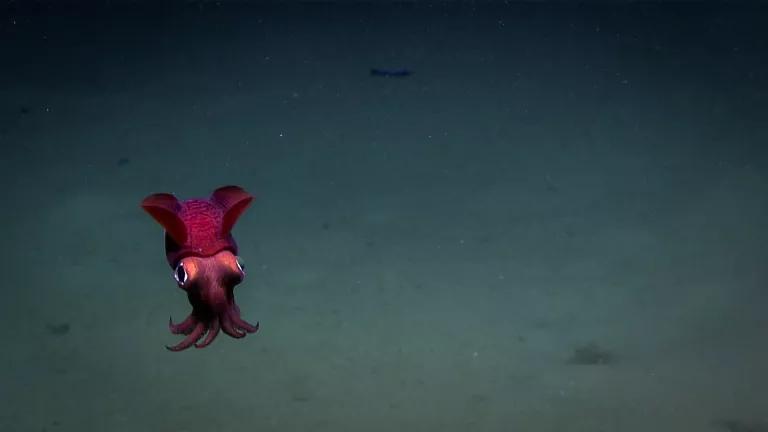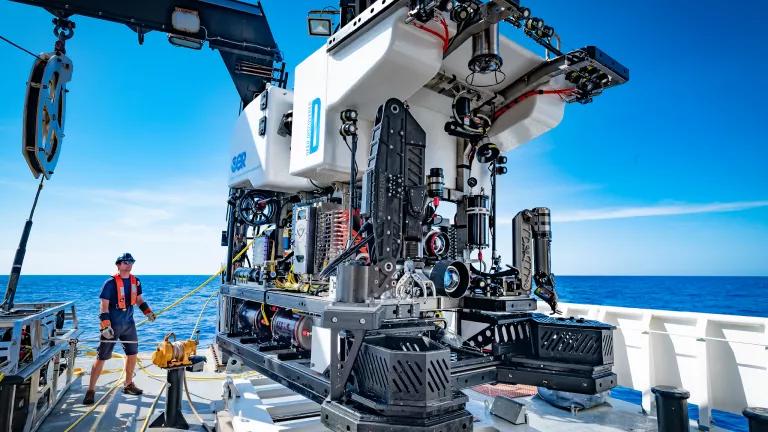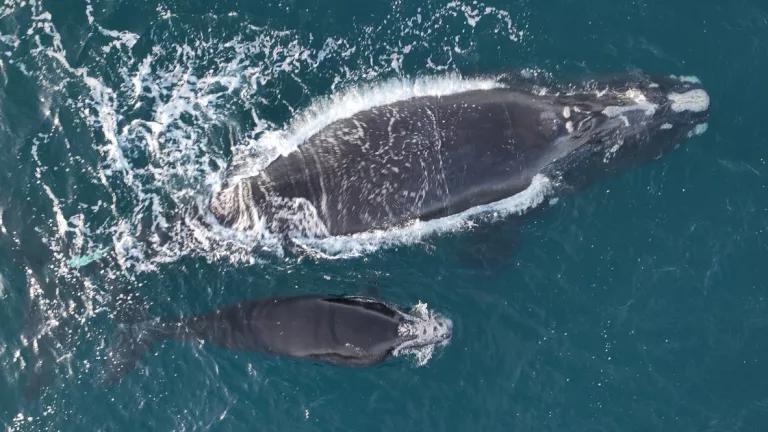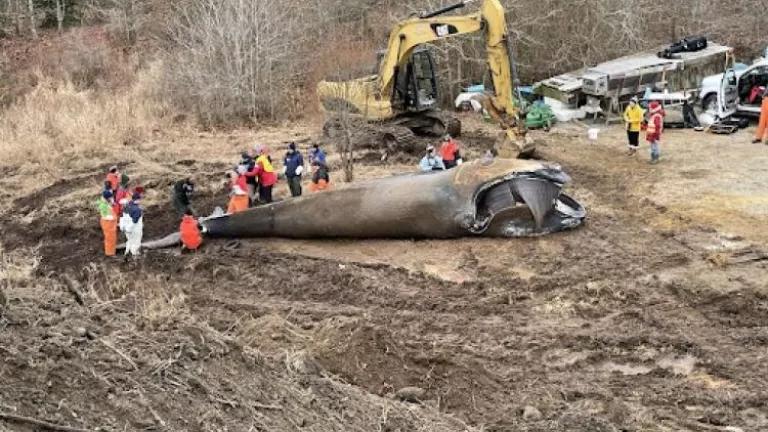New Research Highlights Gaps in Ocean Biodiversity Protection
U.S. marine protected areas fall short in safeguarding ocean biodiversity; more, larger, better-connected protected areas are needed to conserve marine life.

A bobtail squid floating in the Blake Plateau – the world's largest deep-sea coral province off the Southeastern coast.
NOAA Office of Ocean Exploration and Research, Windows to the Deep 2018
The ocean provides us with so much—including food, jobs, and recreation—but is under tremendous strain. Globally, two-thirds of the ocean has been significantly altered by human activity. Already stressed from decades of overexploitation and habitat destruction, marine life is now also struggling to adapt to a hotter, more acidic ocean brought on by climate change.
The ocean’s biodiversity—its sheer variety of life—is at risk, with over one-third of marine mammals and nearly one-third of sharks and reef-forming corals threatened with extinction. Ocean biodiversity is key to ensuring natural ecosystems’ stability and persistence. The greater amount of biological diversity we conserve, the better chance our ocean can recover from disturbances, such as marine heat waves.
To help restore ocean health, scientists worldwide have called for the creation of marine protected areas (MPAs) – ocean habitats set aside mainly for conservation. Especially with the emergence of new industries such as offshore wind, deep-sea mining, and ocean carbon dioxide removal, it’s more important than ever that our conservation efforts are comprehensive and effective.
Recently, scientists developed a framework to analyze just how well the current U.S. MPA network is protecting biodiversity within our country’s 24 marine ecoregions. The authors evaluated the extent to which the existing network of protected areas overlapped with the full range of biodiversity in U.S. waters. Particular attention was given to habitat-forming species; species that play a large role in the food web, such as keystone species; and harmful organisms such as invasive species. In addition, the scientists evaluated connectivity between protected areas, which increases resiliency; whether there is enough redundancy of sites to insure against random harmful events; and if the network was of sufficient size and protection to sustain the ecosystem features.
Their findings are concerning:
- MPAs cover only a fraction of biodiversity in U.S. ocean waters. None of the 24 ecoregions met all the criteria for effective biodiversity distribution and management. One region, the tropical Pacific, contains most of the U.S. biodiversity protections.
- There are no fully protected areas that are both large and well-connected. In fact, the authors note that only three percent of marine waters are in fully protected areas which the science community has found, alongside highly protected areas, to be far more effective than other types of protections at conserving biodiversity, protecting ecosystem structure and function, and enhancing ecosystem resilience in the face of climate change.
- Some ecosystems, such as cold-water corals (i.e. in the deep sea) and biologically important areas for marine mammals are not well represented.
In sum, the new analysis shows that although 26 percent of U.S. waters are protected at some level, that there are serious gaps in biodiversity protection due to a lack of coverage of representative ecosystem types, connectivity between protected areas, and replication of types of sites.

Scientists analyzed Marine Protected Areas (MPA) and Fully Protected Areas (FPA) in 24 ecoregions around the U.S.
Lenfest Ocean Program
The authors recommend increasing biodiversity protections through:
- Strengthening existing and creating new MPAs in places with identified protection gaps.
- Enlarging small existing MPAs, especially in places with few or no protections.
- Improving connectivity by establishing new MPAs as “stepping stones.”
- Establishing more protections in deeper waters.
We can and must secure protections for the full range of U.S. marine biodiversity. This study can serve as a roadmap to prioritize where and what types of habitats need representation. For example, only 0.05 percent of continental U.S. Southeastern federal waters are fully or highly protected – and currently none are protected in the deep sea. Establishing strongly protected areas in the Southeast would ensure that regional marine biodiversity is better protected.
The Blake Plateau—offshore the Carolinas, Georgia, and Florida – was recently discovered to be the world’s largest deep-sea coral habitat and is an excellent target for greater conservation. This region is ecologically rich due to the Gulf Stream, a plethora of deep-sea corals, pelagic Sargassum seaweed habitats, its methane seeps—all which support a wide array of fish, sea turtles, marine mammals, and seabirds. In a warming ocean, Blake Plateau’s deeper, cooler areas could serve as climate refuges for reef-building Lophelia corals, and their associated wildlife. Identifying a network of key habitats within this amazing space could effectively safeguard a large range of Southeastern marine biodiversity.
We must take real and immediate action to help the ocean recover and thrive. Safeguarding the full range of America’s marine ecosystems is critical to keeping our ocean resilient, minimizing disruptions to our marine economy, and ensuring that all our ocean treasures will be enjoyed for generations to come.



